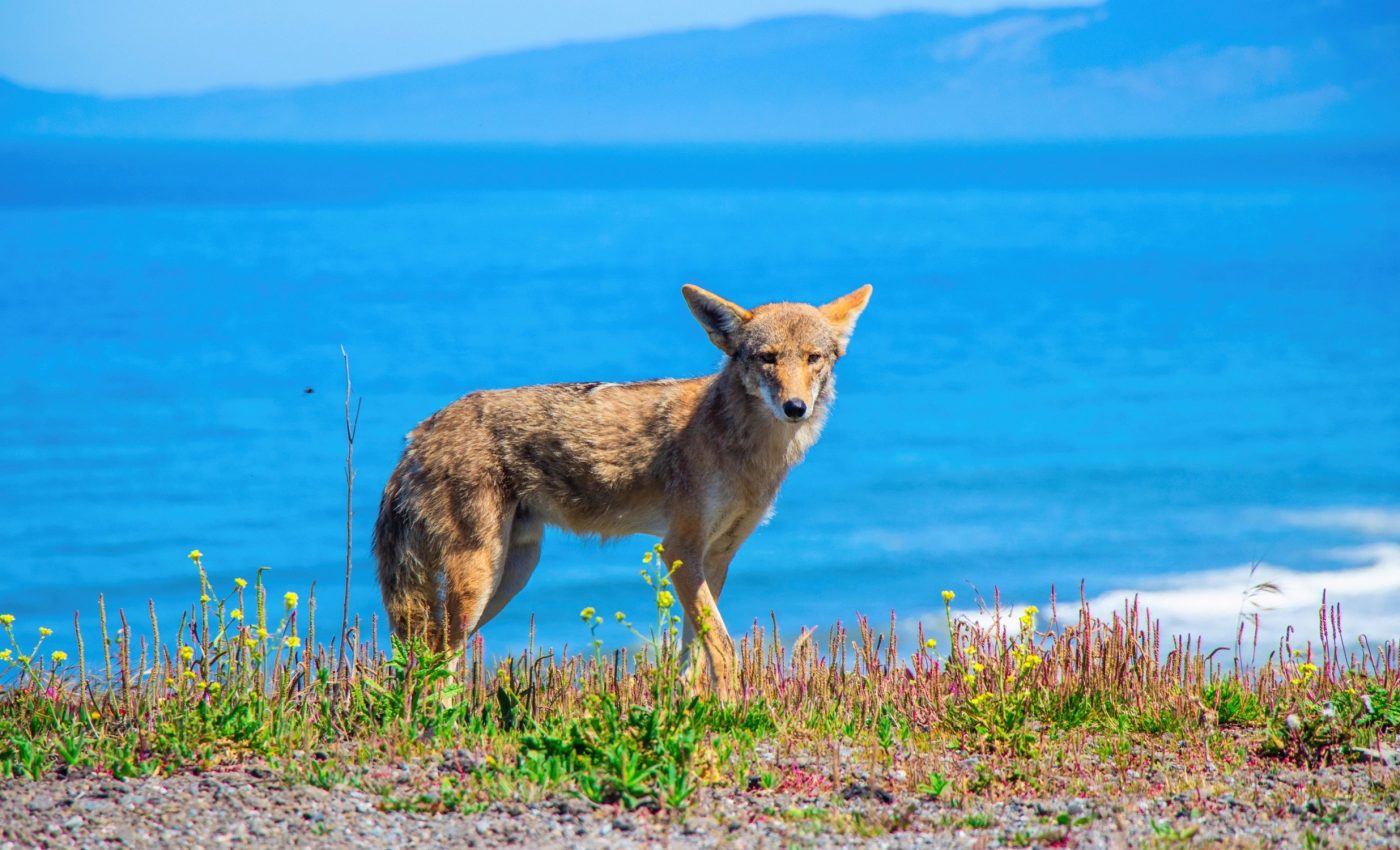
Photos capture coyotes hunting and eating baby seals for the first time
Coyotes are wily hunters that also scavenge for a catholic array of food. They kill rabbits and other small vertebrates, will take scraps from dustbins, and sometimes munch on backyard fruit. But recent evidence shows they also take an interest in harbor seal pups.
Motion-triggered cameras have captured these wild canines dragging baby seals away from mainland beaches. This discovery has sparked questions about how these predators use the shore as part of their menu.
Led by UC Santa Cruz Ph.D. student Frankie Gerraty, the investigation uncovered details of coyote hunting patterns near seal rookeries.
Working alongside Sarah Grimes from the Noyo Center for Marine Science, the team noticed a puzzling pattern of seal-pup carcasses and set out to find out who was to blame.
Cameras reveal coyotes hunting seal pups
Researchers set up cameras on a stretch of sand where harbor seals give birth. Footage revealed coyotes seizing newborn pups and carting them off into the dune vegetation.
“I had a hunch it was coyotes,” said Gerraty. “Terrestrial wildlife that eat seafood are a major focus of mine, and we know that coyotes are very adaptable.”
The team found that coyotes often returned to the same hiding spots with their prey. Investigators also discovered remains that showed a consistent pattern in the way these canines fed, pointing to more than simple random scavenging.
Coyotes hunt seal pups for seasonal food
“There was consistency, they weren’t scattered here and there,” said Gerraty. The pups are born seasonally, so coyotes can hunt them when other typical prey might be less abundant.
Fatty foods are enticing for many species. For coyotes, a blubbery pup provides a calorie-packed option in spring.

The study observed that vultures, ravens, and eagles also fed on leftover carcasses. This suggests that predators and scavengers alike see newborn seals as a valuable food source at certain times of year.
New questions about rookeries
A rookery is a breeding ground where seals gather to give birth. These areas may attract opportunistic land predators, like coyotes, because pups are vulnerable when resting onshore.
Coyotes are known to explore beaches for stranded fish and bird eggs, but recorded instances of hunting seals are limited.
This project captured some of the most detailed accounts of coyotes stalking and killing seal pups in California. Scientists have started to wonder if more rookeries might show similar patterns.
History of predator absence
Historically, wolves and grizzlies were the main large land predators in many parts of California. With those animals gone from most coastal areas, seals have expanded their rookeries onto mainland beaches.
Coyotes have filled that void as they spread throughout the state over the past century. They weigh about 20 to 50 pounds (9 to 23 kilograms) in some regions, which makes a harbor seal pup a manageable but significant prey item.
In past centuries, seals may have kept their pups on remote islands to avoid the attention of bigger predators.
Now, researchers are seeing a shift where some seals return to rocky outcrops farther from shore, presumably to decrease the chance of coyote encounters.
Balancing perceptions
Some people see coyotes as a nuisance or threat. Others admire their resilience and willingness to adapt.
“Coyotes have a PR problem,” noted Gerraty. He does not want this research to stir more anger toward the species, since this is natural behavior between native animals.
Still, it is jarring for onlookers to find baby seals missing or discovered partially eaten in the dunes. The study raises questions about how often this happens and whether seals will change rookery spots to protect their young.
Ripple effects in the ecosystem
Pinnipeds are a group of marine mammals that includes seals and sea lions, and they carry a lot of fat. If coyotes gain enough energy from hunting pups, they might multiply faster or shift their ranges nearer to rookery sites.
Researchers want to learn whether this interaction influences how coyotes behave elsewhere. For example, if pups are an easy meal in spring, coyotes might focus on farmland or suburban edges at other times.
Harbor seals may start choosing haul-out sites that offer more protection from land predators. These shifts could impact local beaches, tourism, and conservation efforts focused on both seals and coyotes.
Have coyotes always hunted seal pups?
Reports from nearby counties hint that coyotes have hunted seal pups at Drakes Estero and Bolinas Lagoon. Wildlife observers in Washington state and Massachusetts have also recorded similar predation events.
Scientists say land-based predators hunting marine mammals is not new, but thorough research on it has been missing for a long time.
This study is unique because it shows how coyotes may regularly return for blubber-rich meals, especially when pups are small.
The authors suggest that more data on coyote abundance, behavior, and health in coastal zones could help conservationists manage human–wildlife conflicts.
By shedding light on this predator–prey link, biologists can better track coastal ecosystems and anticipate future shifts in animal populations.
The study is published in Ecology.
—–
Like what you read? Subscribe to our newsletter for engaging articles, exclusive content, and the latest updates.
Check us out on EarthSnap, a free app brought to you by Eric Ralls and Earth.com.
—–













